A number of brands now intend to go fully electric later this decade, while others are still years away from introducing their first EV

Nearly 150 different plug-in vehicles are on their way to U.S. dealerships now through 2026. That’s in addition to a number of battery-electric offerings automakers already have rolled out this year.
At the moment, electric vehicles are still a small fraction of total sales, but that’s certain to grow rapidly as they start to make up more of dealership inventories in 2023 and beyond. Several brands now intend to go fully electric later this decade, while others are still years away from introducing their first EV.
Here’s a chronological look at the battery EVs and plug-in hybrids that Automotive News has reported are on the way. Prices listed include shipping.

2022
BMW i7: The all-electric version of the 7 Series sedan features dual motors that deliver a combined 536 hp and an EPA-estimated range of up to 307 miles.
Mercedes EQE sedan: The battery-electric midsize sedan is based on the EVA2 platform. The EQE is powered by a 90.6-kilowatt-hour battery that delivers a range of up to 410 miles.
Mitsubishi Outlander PHEV: The redesigned plug-in hybrid will arrive in November. Mitsubishi said it has a more powerful electric motor and a larger 20-kilowatt-hour battery that delivers 54 miles of zero-emission driving range.

Nissan Ariya: The new Rogue-size electric crossover was initially expected to launch in mid-2021 but got delayed by COVID-related chip shortages. Now U.S. sales will begin in the fall. The dual-motor EV is available in front-wheel or all-wheel drive and delivers up to 300 miles of range. New technologies include Nissan’s next-generation automated driving system.

Polestar 3: The five-seat midsize crossover coupe will debut globally in October. It features a sloping silhouette and headlight and rear light styling distinct from other Polestar vehicles. The 2024 Polestar 3 is built on a new all-electric platform developed by Volvo for its next-generation vehicles, designed with dual motors and an expected EPA range of more than 300 miles.
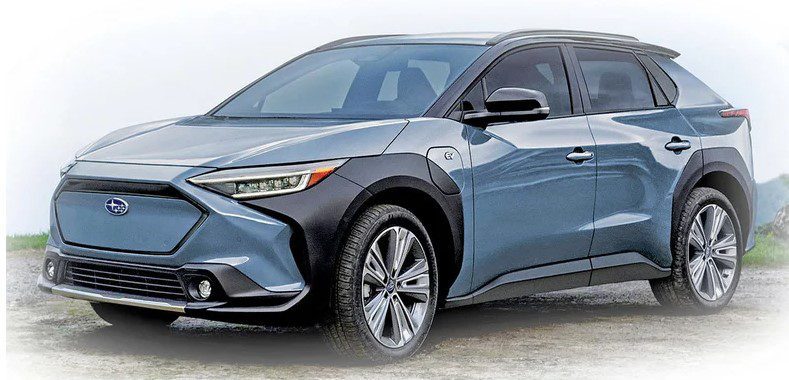
Subaru Solterra: Subaru’s first mass-market EV was to arrive at U.S. dealerships in the second half of 2022, and it may still, if Toyota can solve the recall issue affecting the Solterra and bZ4X. The Solterra is built on a dedicated EV platform called the e-Subaru Global Platform, echoing Toyota’s e-Toyota New Global Architecture. Future EVs off the platform are likely, but details are unclear. The all-wheel-drive compact crossover will be due for a freshening in 2026.
Volkswagen ID4: North American production of the battery-powered ID4 began in Chattanooga in July, with the Americanized version heading to dealerships this fall. The reengineered compact crossover will feature a smaller, 62-kilowatt-hour battery pack. The ID4 will be due for a freshening in 2025.
2023
Alfa Romeo Tonale: The compact crossover is expected as both a plug-in hybrid and a conventional gasoline model. The plug-in will reach 272 hp and have more than 30 miles of electric range.
BMW i5: BMW has been quiet on an all-electric version of the 5 Series arriving in the second half of 2023, but the website BMWBLOG expects two variants initially, including an M performance version.
BMW XM: The M brand-exclusive XM is a high-performance SUV arriving in the first half of 2023. The halo model will be available only as a plug-in hybrid, using the automaker’s newly developed M Hybrid drive system, mating a V-8 engine and a high-performance electric motor to generate a combined 644 hp and an estimated all-electric range of up to 30 miles.
BrightDrop Zevo 400: Slated to launch in late 2023, the Zevo 400 van features more than 400 cubic feet of cargo space and is designed for smaller, more frequent deliveries, such as grocery dropoffs and telecom maintenance.
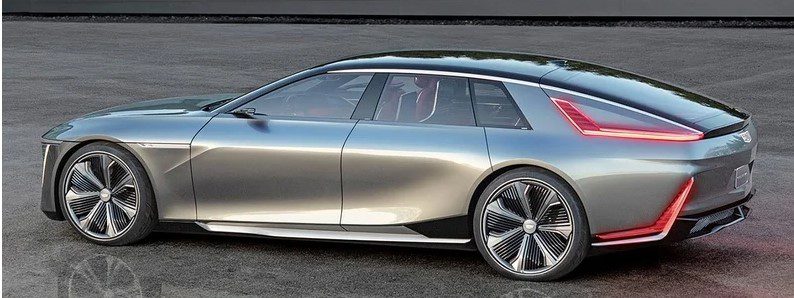
Cadillac Celestiq: Expected to go on sale in 2023, Cadillac’s flagship electric sedan will be hand-built in small quantities at the General Motors Global Technical Center in Warren, Mich. GM expects the Celestiq will have the highest volume of 3D-printed materials of any GM production vehicle.
Chevrolet Blazer EV: Chevy plans to launch the electric Blazer in summer 2023. It will be built at Ramos Arizpe Assembly in Mexico. Various trim levels offered will have starting prices ranging from $44,995 to $65,995 and driving ranges of 247 to 320 miles.
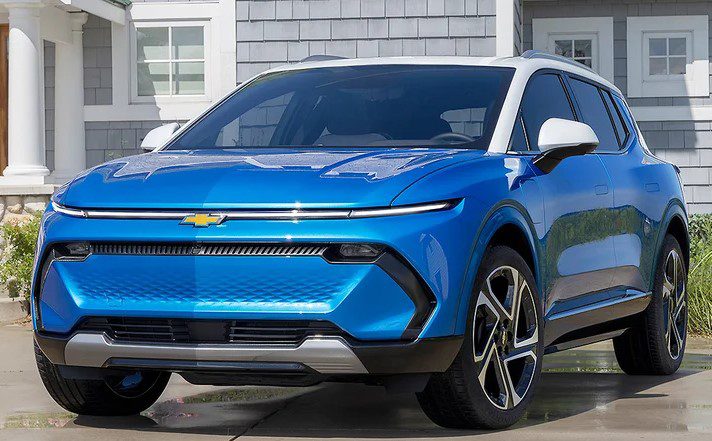
Chevrolet Equinox EV: The electric Equinox will launch next fall at a starting price of around $30,000, on GM’s Ultium battery platform. It will be built at Ramos Arizpe Assembly
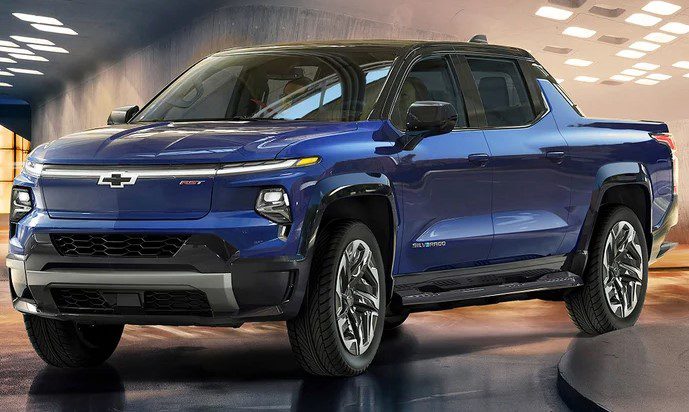
Chevrolet Silverado EV: The work version of the pickup, starting at $41,595, is scheduled to go on sale in spring 2023, followed by the $106,695 retail RST trim in the fall. The truck has more than 400 miles of driving range, Super Cruise driver-assist technology and a tow rating of up to 10,000 pounds. After production begins, Chevy plans to reveal a full portfolio with trim levels ranging from about $50,000 to $80,000.
Cruise Origin: Production of the Origin is slated to start at Factory Zero in Detroit in early 2023. GM developed the Origin with Honda as a self-driving ride-hailing and delivery van. It has two benches that face each other and no steering wheel, pedals or space for an operator.
Dodge Hornet R/T: Dodge’s first plug- in hybrid entry, which gets more than 30 miles of electric range, makes its debut next spring. It will surpass 285 hp and have a class-exclusive PowerShot feature that supplies additional bursts of 25 hp on demand.
Genesis Electrified GV70: The Electrified GV70 compact crossover starts production in December at Hyundai’s factory in Montgomery, Ala., with deliveries beginning in early 2023. For now it’s an electric variant of the gasoline-powered GV70, but a dedicated GV70 EV built on the E-GMP platform is expected to replace both offerings late in 2027.
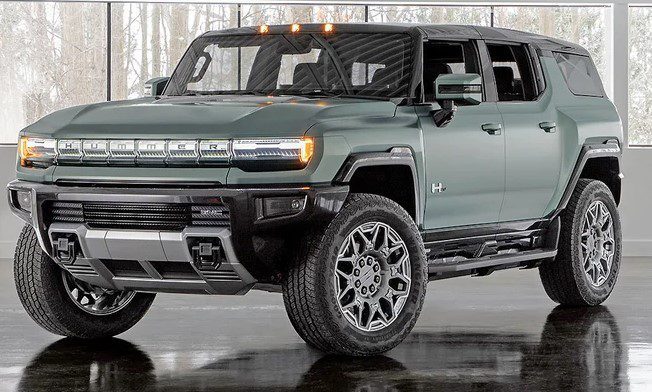
GMC Hummer EV SUV: Edition 1 of the Hummer SUV is slated to launch early next year. Lower trim levels will continue to roll out through spring 2024. Expect a minor refreshening in 2026.
GMC Sierra EV: The Sierra EV, built at Factory Zero and Orion Assembly in Michigan, likely will go on sale in the second half of 2023.
Hyundai Ioniq 6: The Ioniq 6 electric sedan will be Hyundai’s second dedicated EV when it debuts as a 2024 model. It’s built on the E-GMP architecture and has sleek “streamliner” styling that’s both upscale and aerodynamic.
Hyundai Kona Electric: The Kona Electric is likely to continue into the crossover’s second generation, due to arrive in the second half of 2023.
Kia EV9: Kia unveiled the EV9 concept in 2021 as a boxy, Telluride-sized electric crossover with three rows developed on the E-GMP architecture, which enables ultrafast charging and robust range. Kia confirms production will begin in fall 2023, so the seven-seater will hit the market in late 2023 or 2024, filling a spot cornered only by Tesla’s pricey Model X. Pricing is unknown but could land between $50,000 and $60,000.
Lamborghini plug-in hybrid: The Aventador’s successor will be a plug-in hybrid model with a V-12 engine, and is expected to arrive in the second half of 2023. It is unclear whether the brand will keep the Aventador name; history suggests not.
Lamborghini Urus: Lamborghini’s volume model is undergoing a reengineering to accommodate a plug-in hybrid powertrain in early 2023.
Land Rover Range Rover Evoque: The redesigned 2024 Evoque shifts to the EMA architecture and will be available as an EV.
Lexus RZ: The RZ is equipped with a dual-motor powertrain pairing two new e-axles developed by Toyota Group supplier Aisin Corp. — a 150- kilowatt motor in front and an 80-kilowatt counterpart in back, resulting in output of 230 kilowatts, or 308 hp. The electric compact crossover arrives at U.S. dealerships in the first half of 2023.
Maserati GranTurismo: The coupe and its convertible counterpart get all- electric variants next year. The electric option will top 1,200 hp.
Maserati Grecale: The new Grecale midsize crossover is getting an electric variant in 2023.
Mazda CX-70/CX-90: The CX-70 five-seater and three-row CX-90 are both expected to arrive in late 2023 as 2024 models with plug-in hybrid variants.
Mazda MX-30: A version of the electric compact crossover with a rotary engine range extender is expected in the first half of 2023.
Mercedes EQE crossover: The all-electric version of the GLE midsize crossover should arrive in the second quarter of next year. Like the EQE sedan, it will be built on the EVA2 platform and have similar powertrain specs. Expect a high-performance version of the crossover under the AMG brand.
Mercedes eSprinter: A battery-powered U.S.-made version of the Sprinter van arrives in the second half of 2023. The eSprinter will be built on the EVA2 platform and be available in two wheelbases.
Ram ProMaster: The large van gets an electric variant in 2023.
Rivian EDV 900: The third and largest of Rivian’s electric delivery vans used by Amazon could come in 2023.
Rolls-Royce Spectre: The brand’s first EV, built on the same aluminum architecture underpinning its other models, should arrive in the second half of 2023.
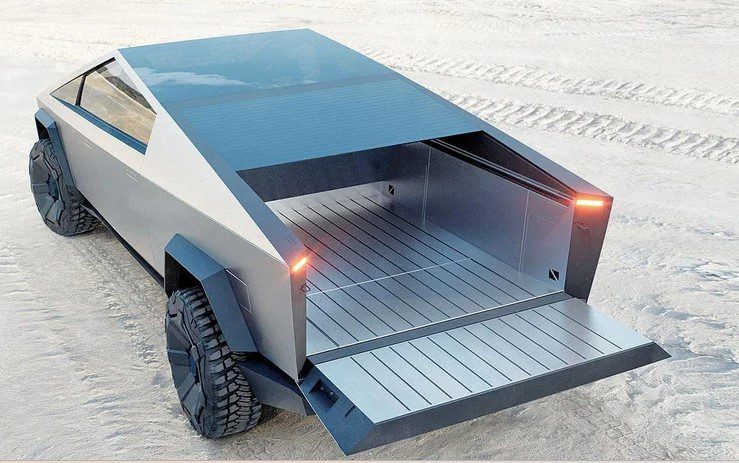
Tesla Cybertruck: The wildly styled pickup was first shown three years ago with promises to revolutionize the segment. CEO Elon Musk promised the first units by late 2021, but now says the launch will come in 2023.
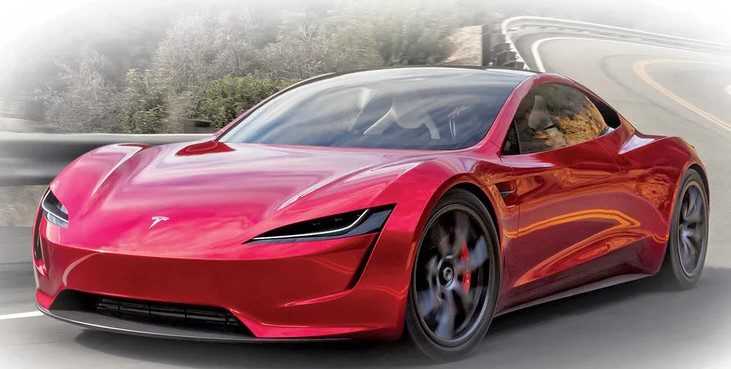
Tesla Roadster: Although no formal date has been set by Tesla, which calls the Roadster a supercar on its website, Musk said this year it will follow the Cybertruck into production, suggesting 2023.
Toyota Prius Prime: Toyota is re-upping the plug-in hybrid in 2023 with a redesign expected to greatly alter styling. Look for a full slate of safety, driver-assistance and infotainment upgrades as well.
Volvo electric large crossover: Volvo will offer an electric large crossover, similar to the XC90, the brand’s top-of-the-line model, in the second half of 2023. The U.S.-built crossover is based on the electric-only SPA2 platform and will include advanced safety and automated driving technologies.
2024
Acura electric crossover: Acura plans to debut its first electric crossover in 2024, based on a GM platform and using a GM Ultium battery pack. Acura will design the model inside and out, likely with the same footprint as the Honda Prologue, which slots between Honda’s compact CR-V and midsize Passport.
Alfa Romeo small crossover: Alfa plans to launch its first battery-electric vehicle, a crossover, in 2024. This model, slotted below the Tonale, will have gasoline-powered variants as well. It may be called the Brennero.
Aston Martin Valhalla: Aston’s first mid-engine V-8, plug-in hybrid supercar could debut next year, with first deliveries coming in early 2024. It could have a pair of electric motors and a total horsepower rating topping 800.
Audi A6 E-tron: The battery-powered midsize sedan will debut in 2024 and carry on the A6 family nameplate on the PPE platform.
Audi Q6 E-tron: The electric midsize crossover will debut on the PPE platform, which Audi shares with Porsche, in 2024.
Buick electric crossovers: Forecasters expect two electric crossovers to go on sale in 2024. Both will be called Electras with an alphanumeric. They will be built in China. Buick confirms plans to produce one of the crossovers.
Cadillac compact electric crossover: Cadillac is expected to launch an electric crossover, similar in size to the XT4, in late 2024. It will be built at Ramos Arizpe Assembly in Mexico.
Cadillac Escalade IQ: Cadillac will roll out an electric version of the Escalade, called the Escalade IQ, that’s likely to be built at GM’s Factory Zero in Detroit.
Cadillac large electric crossover: A large electric crossover will launch in 2024. It is expected to be built at Spring Hill Assembly in Tennessee, alongside the Lyriq.
Dodge Challenger: With the gasoline version of the Challenger going out of production at the end of 2023, production of the next-generation model on the STLA Large platform for EVs is slated to begin in 2024.

Dodge Charger: Dodge unveiled the electric Charger Daytona SRT Concept in August, providing a look into the brand’s future. The noisy EV comes with an industry-first “exhaust” system for the segment and an 800-volt battery.
Honda Prologue: The Prologue electric compact crossover uses GM’s Ultium platform and batteries. But its exterior was developed by the Honda Design Studio in Los Angeles with influence from a design team in Japan. Honda will design the interior as well. According to a digital rendering, the Prologue mixes clean lines with a long wheelbase, short overhang and strong stance.
Hyundai Ioniq 7: Hyundai says the Ioniq 7 will come to market in 2024, but the timeline could stretch to mid-2025. Hyundai’s third dedicated EV will be based on the Seven concept it previewed at the 2021 Los Angeles Auto Show. The three-row crossover will offer a Palisade- esque package to buyers who want an EV with space to cart kids and cargo.

Jeep Recon: Production begins in 2024, with orders starting early next year. The Recon EV offers open-air experiences with a power top and removable doors and glass.
Jeep Wagoneer/Grand Wagoneer: Jeep’s largest SUVs will get plug-in hybrid 4xe versions.

Jeep Wagoneer S: The SUV nameplate is getting an electric midsize crossover sibling with unique design language that sets it apart. Jeep is targeting a range of 400 miles and aims for the Wagoneer S to have 600 hp and a 0-to-60-mph time of around 3.5 seconds. Production starts in North America in 2024. Consumers can begin ordering the vehicle in early 2023.
Kia EV4: The first in a pair of electric subcompact crossovers is expected in late 2024, followed by the slightly smaller EV3 in mid-2026. It’s possible one of the two will not come to the U.S.
Land Rover Discovery: The Discovery moves to the EMA platform around 2024, offered with plug-in and all-electric powertrains.
Land Rover Range Rover/Range Rover Sport: Fully electric versions are due.
Lincoln Corsair-E: Lincoln’s plan to build an electric version of its Corsair crossover in the U.S. by mid-decade was scrapped earlier this year. The brand now plans to build the C-segment crossover in China starting in 2024; U.S. sales plans are unclear.
Lucid Gravity: Lucid has been preparing its Arizona factory for the next chapter with the Gravity SUV. Lucid hasn’t released details, except that it’s using the same cutting-edge platform as the Air. So big numbers for range, efficiency and power are expected by analysts. Lucid is expected to unveil the Gravity and open the order banks this year or early next year for delivery in 2024.
McLaren plug-in hybrid: The successor to the P1 could arrive in late 2024. It will be the latest in the Ultimate Series line. About 375 units are planned.
Polestar 4: The Porsche Macan- sized compact crossover arrives as early as the first half of 2024. It will ride on a new Geely Group-developed platform.
Polestar 5: The performance sedan should arrive in late 2024, but could slip into 2025. A development prototype revealed at the Goodwood Festival of Speed in June featured a dual-motor powertrain delivering a combined 884 hp.
Porsche Macan: Software supplier-related issues delayed the hotly anticipated electric version of Porsche’s best-selling U.S. model by about a year. U.S. deliveries should now begin in 2024. The Macan EV will slot on Volkswagen Group’s Premium Platform Electric platform, with 800-volt technology.
Ram 1500: Ram will unveil its electric 1500 concept, set to go on sale in 2024, at the Los Angeles Auto Show in November. A version with a range-extending gasoline engine may arrive around the same time.
Rivian R1X: AutoPacific expects a new variant of the R1S SUV, possibly named the R1X, in 2024 for the 2025 model year to take on future EV competitors from legacy brands.
Tesla Model 3: AutoForecast Solutions says there could be a redesign of the Model 3 as early as 2024. It’s the oldest Tesla vehicle without a major update, and the styling is becoming dated in markets like California where the Model 3 is ubiquitous.
Tesla robotaxi: Tesla expects to reach volume production of a new robotaxi vehicle without a steering wheel or pedals by 2024, Musk said on an earnings call this year. The goal of the model, which would use Tesla’s still-incomplete Full Self-Driving software, is to reach the lowest cost per mile for a taxi-type vehicle. Musk hasn’t offered more details, saying he doesn’t want to ruin the product announcement event next year.
Tesla robovan: Musk took to Twitter July 7 to bolster predictions that Tesla was looking at a future van-style vehicle, either for lifestyle, cargo or both. Previously, AutoForecast Solutions told Automotive News, “Tesla should introduce a large commercial van in 2024, depending on how the rollout of the Cybertruck proceeds.” The van could share a platform with the Cybertruck, which is expected to go into production next year in Texas.
Toyota electric crossover: At an event in Japan in December, CEO Akio Toyoda showed eight different potential Toyota BEVs that are in the automaker’s long-term product plans, but he was silent about the order in which they would come to market and which would make it to the U.S. In deciding whether to go with volume and market share or per-vehicle profits, Toyota could make its second EV, expected to come to market in 2024, be either a larger three-row crossover or a crossover inspired by the Compact Cruiser EV concept Toyota showed in December.
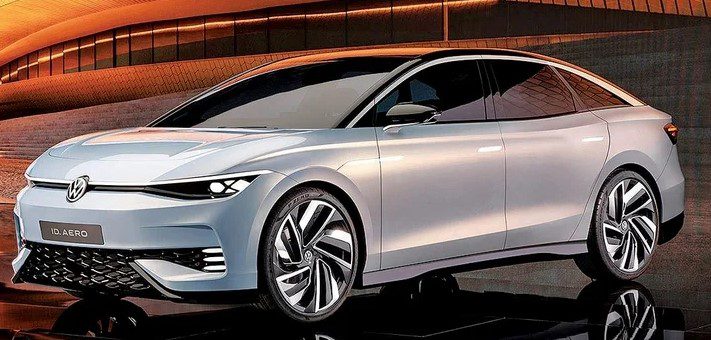
Volkswagen ID Aero: Volkswagen has promised its dealers a third EV based on the MEB architecture to go along with the ID4 and ID Buzz, one with better aerodynamics that should offer impressive range. The Passat-sized electric sedan will be imported from Europe.

Volkswagen ID Buzz: The retro- styled Microbus arriving in dealerships in 2024 will continue to be built in Hanover, Germany, for the time being. The version coming to the U.S. is longer than European passenger and cargo models, with more room from the B-pillar rearward and a longer wheelbase. The extra room may be used to at least offer a larger battery pack, though there is no definitive word on that option.
2025
Aston Martin EV: Aston Martin says its first EV will be launched in 2025. But the British automaker has not said anything about the vehicle. Speculation in the press is that it could be a fully electric version of the Valhalla hybrid supercar or a battery-powered version of the DB11 sports car.
Audi PPE-based EVs: Audi will expand its lineup of EVs based on the PPE platform in 2025, but the shape and number of those vehicles have yet to be revealed.
Bentley EV SUV: Bentley’s first EV is predicted to be an SUV when it arrives in late 2025 or early 2026. It is expected to live alongside the Bentayga initially in the lineup before fully replacing the model by 2030. According to executives, the EV will boast a range in excess of 300 miles.
Cadillac Escalade IQL: An electric version of the extended-wheelbase Escalade ESV is expected after the standard-size model arrives in 2024.
Chevrolet Corvette EV: Forecasters expect an electric version of the sports car in 2025 along with at least one Corvette crossover around then. The EVs will be built at GM’s Lansing Grand River Assembly in Michigan.
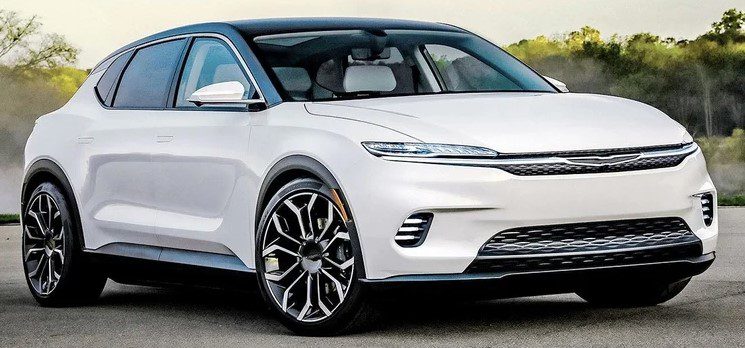
Chrysler electric crossover: The brand plans to release its first battery-electric vehicle by 2025. Chrysler unveiled a preview of what that model could look like with its electric Airflow crossover concept at CES in January. Chrysler said the concept, which offers 350 to 400 miles of electric range, is based on the STLA Large platform.
Ford electric pickup: Ford says its Blue Oval City assembly plant in Tennessee will build “next-generation electric F-Series pickups” on Ford’s dedicated battery platform. CEO Jim Farley went a step further, saying the new plant will build “another truck” that is not a redesigned Lightning. The vehicle will go on sale in 2025. Details are scarce, but it could be a distinctly styled full-size pickup under the F-Series umbrella marketed more toward retail buyers while the traditional Lightning made in Michigan would focus on commercial sales.
Ford Explorer EV: After scrapping plans to build the Explorer and Lincoln Aviator EVs alongside the Mustang Mach-E in Cuautitlan, Mexico, Ford now plans to make the vehicles in Oakville, Ontario, starting in late 2024. Sales likely will begin in early 2025. The site soon will be converted from building the gasoline-powered Edge and Lincoln Nautilus.
Genesis Electric G70: The second generation of the G70 should arrive in 2025 as a dedicated EV built on the E-GMP platform. It’s unclear whether Genesis will stick with the “Electrified” naming convention it’s using on its G80 and GV70 since the model’s availability only with an all-electric powertrain already signals it’s electrified.
Genesis large electric crossover: Genesis could debut an electric three-row crossover in the second half of 2025 and it’s possible it will be designated the GV90. The model would be an upscale version of the Kia EV9 and Hyundai Ioniq 7, both seven-seat midsize crossovers built on the E-GMP platform that will roll out in the coming years.
Infiniti EV sedan: The Japan-made Q50 sports sedan should be reincarnated mid-decade as a battery-powered model based on the Q’s Inspiration sports sedan concept. It features an elevated driving position and all-wheel drive. The new EV will be built at Nissan’s plant in Mississippi starting in 2025.
Jaguar large electric SUV: Arriving in 2025 and built on a stretched Panthera platform, the big electric Jag SUV is aimed at the U.S. and China. It is expected to be offered in two models, a standard, loaded version and a super-high-performance SVR model that could have a sticker price north of $200,000.
Jaguar midsize electric SUV: Autocar says the smallest of the new Jags will be about the same size as the Porsche Taycan, come in three- and five-door body styles, and have a six-figure starting price tag.
Kia EV5: An electric sedan is expected in mid-2025. It is still unclear whether Kia’s K5 midsize sedan will phase out after its current cycle. If so, the EV5 could take its place in the lineup, sharing similar dimensions with the Hyundai Ioniq 6 and sporting a design not aimed at family demographics.
Land Rover Defender: A fully electric model is expected.
Land Rover Discovery Sport: The next-generation Discovery Sport will move to the EMA architecture and be available as an EV, possibly in 2025.
Lexus’ second BEV: Lexus is bringing a second EV to the U.S. in 2025, but whether it will be a three-row crossover, similar to the RX, or a more efficient sports sedan, similar to the IS, is unknown. The Lexus Electrified Sedan concept shown in December might be the more logical bet, given the RX is the brand’s best-seller and is freshly redesigned with a hybridized powertrain, and a three-row crossover might undercut the new TX, while the IS is long in the tooth. But never bet against Lexus’ ability to make money — which means it will probably be the crossover.
Lincoln Aviator-sized EV: An EV based on the Aviator was delayed alongside the Ford Explorer variant to make room for more Mustang Mach-E production in Cuautitlan, Mexico. Now it’s bound for Ford’s Oakville Assembly Plant, with production expected to begin in late 2024 and sales starting in early 2025.
Lincoln midsize crossover EV: Lincoln had planned a midsize crossover EV, code-named CDX818, for U.S. production in 2025. That vehicle is now planned for China-only production, with U.S. sales plans unclear.
Lucid midsize platform: Lucid executives have talked a little about the company’s next platform, which will be designed for more mainstream luxury vehicles. A smaller sedan or hatchback could use half the battery, a single motor and more mainstream materials to hit the price point of a Tesla Model 3, which starts just below $50,000. The same platform could also support a crossover such as the Tesla Model Y. But with its hands full with the Air right now, Lucid probably will not deliver a third model until 2025.
Maserati MC20: The sports car will get a battery-electric offering in 2025.
Mazda MX-50: It’s possible Mazda will debut an electric compact crossover in 2025 offering CX-50 sizing and a version with a rotary engine range extender, like what is expected on the next iteration of the MX-30.
Mercedes EQC crossover: Mercedes-Benz plans to bring the next generation of its EQC electric compact crossover to the U.S. in late 2025. It will be based on the compact MMA platform.
Mini electric compact crossover: The new EV would slot below the brand’s best-selling Countryman. Developed in cooperation with Great Wall Motor, the China-made Mini crossover will debut an all-electric platform and a modern design. Not clear yet is whether the EV will be greenlighted for the U.S. market.
Mini electric small car: The China-made compact hatchback would be smaller than the current hardtop. Mini will jointly develop it with Great Wall Motor. Whether the model reaches U.S. dealers remains to be seen.
Nissan electric crossover coupe: Nissan will introduce a replacement for the Leaf mid-decade. Nissan teased the new model last year in a sporty concept called the Chill-Out. It uses Nissan’s CMF-EV platform and features the dual-motor e-4ORCE all-wheel-drive system.
Nissan electric sedan: The battery-powered model arriving in 2025 has a sedan-like profile with a sloping roofline and new headlight and taillight designs. Inspired by the Nissan IMs concept shown at the Detroit auto show in 2019, the dual-motor EV will be based on the CMF-EV platform and feature a long wheelbase and waistline, cabin-forward A-pillars and a sloped angle to the rear windows.
Porsche 718 Boxster: Porsche will turn the mid-engine sports car into an exclusively electric model in 2025.
Porsche 718 Cayman: Porsche should reveal a battery-powered version mid-decade.
Porsche Cayenne: The crossover could be the fifth Porsche nameplate to receive an all-electric powertrain as early as 2025.
Rivian R2T/R2S/R2X/R2R: The first vehicles out of Rivian’s Georgia plant are designed to be smaller and more affordable, the company says. The automaker will likely use in-house motors and offer lithium iron batteries to bring down their cost compared with the pricey R1T and R1S. Rivian says the plant will launch its first vehicles in 2025. Those could include a smaller pickup using the R2T name and a smaller R2S SUV. The new platform also could be used to make a smaller Rivian R2X that takes aim at two-door versions of the Wrangler and Bronco, once battery-electric variants of those competitors are offered. If Rivian decides to make more carlike vehicles, one possibility is an off-road-focused hatchback with the look of a rally car. AutoForecast Solutions says the sporting vehicle could take the R2R name.
Rolls-Royce electric crossover: A battery- powered crossover could arrive in U.S. showrooms by mid-decade. According to media reports, the EV would be built on the Architecture of Luxury platform and share drivetrain technology with parent BMW’s next-generation EVs.
Toyota electric sedan: Given the earlier than expected product launches, Toyota’s third BEV could be a sedan arriving at U.S. dealerships in 2025.
Volvo electric midsize crossover: An all- electric version of the XC60 crossover arrives in the first half of 2025. A dealer describes it as being larger, sportier and more off-road-capable — with a new front and rear design. It also has a newly designed instrument cluster and a floating center display inside.
2026
Acura NSX: It’s possible a new NSX could pop up in 2026 with an all-electric powertrain.
Audi Artemis Project EV: Audi plans to expand its EV lineup in 2026 with a vehicle and platform co-developed with sibling brand Porsche. It will debut the brand’s first Level 4-capable automated driving system, according to top executives, and is expected to be based on the Grandsphere concept the brand showed nearly a year ago.
Bentley EV sedan: The luxury brand’s second full EV is expected to be a sedan built on Volkswagen Group’s SSP platform. It likely will arrive very late in 2026 or early 2027.
BMW iX3: BMW previously put off plans to export its first electric crossover to the U.S., reportedly because of inadequate range and the lack of all-wheel drive. But the BEV’s second generation could arrive here in 2026, based on the Neue Klasse platform.
Buick compact electric crossover: An electric crossover to replace the Encore GX is expected in 2026.
Cadillac large/compact electric sedans: Electric sedans to replace the CT4 and CT5 are expected to go on sale in 2026. They will be built at GM’s Lansing Grand River Assembly in Michigan.
Chevrolet Colorado EV/GMC Canyon EV: Expect electric versions of GM’s midsize pickups in 2026, built at Orion Assembly in Michigan. They will sell alongside the gasoline-powered models.
Chevrolet Express EV/GMC Savana EV: GM is expected to introduce electric versions of its commercial vans in 2026.
They will likely be built in Wentzville, Mo. GMC plans to add two vehicles to its commercial portfolio — a full-sized battery-electric cargo van and a medium- duty truck powered by Ultium batteries and Hydrotec hydrogen fuel-cell technology.
Chevrolet Tahoe/GMC Yukon EV: Electric versions of the full-size SUVs are expected to go on sale in 2026. They will sell alongside the gasoline-powered models.
Ferrari EV: The brand’s first battery-electric vehicle, which Ferrari said it will unveil in 2025, could debut in the U.S. in 2026.
Ford E-Transit: Ford plans to launch the next- generation E-Transit, built on a dedicated battery platform, in 2026 at Ohio Assembly Plant. Ford promises to add a “new commercial vehicle” at the plant around mid-decade but hasn’t said what it will be. Ford executives say the E-Transit is likely to get new lithium iron phosphate cell chemistry, although it’s unclear whether that would happen before or after the redesign.
Ford Mustang Mach-E: The electric crossover will be redesigned on a new, dedicated battery platform in 2026.
Genesis Electric GV80: An electric version of the GV80 is expected when the midsize crossover is redesigned for its second generation in 2026 or 2027. It would be the second existing Genesis nameplate to transition to the E-GMP platform, and one of the four crossovers Genesis says it will launch by 2027. Like the future electric G70, it remains unknown whether it will take on the “Electrified” name.
Genesis GV80: A redesign of the crossover should come in 2026 and include an electric variant.
Honda e:Architecture EVs: Honda is targeting 2026 for launching its e:Architecture platform that will underpin larger EVs for North America.
Hyundai Ioniq 3: Hyundai’s fourth dedicated EV, the Ioniq 3 subcompact crossover, is expected in mid-2026, and could replace the Venue as the brand’s gateway vehicle.
Infiniti electric midsize crossover: The EV could arrive in 2026. It takes cues from the 2019 Infiniti QX Inspiration concept featuring a grille-less front fascia dominated by an illuminated Infiniti logo, thin headlamp strips with laser-like etchings and a wing-shaped light strip running across the tailgate.
Infiniti midsize crossover coupe: Based on the QX60, a two-row midsize crossover may join the Infiniti line in 2026 to compete with the likes of the Lexus RX and Mercedes-Benz GLE.
Kia EV3: The EV3 is expected about two years after the larger EV4, though it’s possible one of the two will not come to the U.S.
Lamborghini 2+2 GT: Lamborghini continues to work on an EV in the form of a 2+2 GT, in cooperation with Porsche and Audi. The vehicle will likely take advantage of Volkswagen Group’s new SSP architecture. It is unlikely to reach the U.S. before 2026.
Lexus third BEV: The third Lexus EV, due in 2026, could be a stunning LFA-inspired sports sedan with a 0-to-60 time in the low two-second range and be a halo vehicle. However, the brand says the sedan’s estimated 400-plus-mile battery range would rely on the “possible use of solid-state batteries” — and that technology is still an engineering puzzle yet to be solved.
Mercedes EQC sedan: A battery- powered version of the C-Class sedan is possible in 2026.
Mercedes-AMG EV: An all-electric, high-performance car could arrive in the first quarter of 2026. The four-door vehicle, based on the AMG.EA platform, was teased with the teardrop-shaped Vision AMG concept in May.
It features sharply angled A-pillars, flared wheel arches, broad shoulders at the rear and a longer, aerodynamic rear overhang.
Mitsubishi electric compact crossover: Mitsubishi is planning a battery-powered compact crossover that could arrive in 2026. The model could be similar to an electric coupe-like crossover expected to replace the Nissan Leaf mid-decade. That EV was teased last year in a dual-motor all-wheel-drive concept based on Nissan’s CMF-EV platform.
Polestar Roadster: Polestar is toying with the idea of a Porsche 911-type halo model, which could go on sale in the U.S. in 2026. The automaker teased the project in March with a swoopy hardtop convertible concept called the Polestar O2.
Porsche electric large crossover: Porsche is expanding its lineup for the first time since the Macan launched in 2014. Porsche CEO Oliver Blume described the plus-size three-row EV as “a very sporty interpretation of an SUV.” The range-topping model positioned above the Cayenne is code-named K1 and could arrive in the U.S. as early as 2026.
Volkswagen electric crossover: The promised three-row electric crossover is expected to debut in 2026, about the same time a redesigned, similar-sized Atlas and Atlas Cross Sport arrive. Expect the electric version to be built in Chattanooga, but there is no confirmation yet on those plans.
Volvo electric subcompact crossover: The electric crossover arriving in the U.S. by 2026 will slot below the XC40 Recharge. It could be built in China on the SEA platform.



